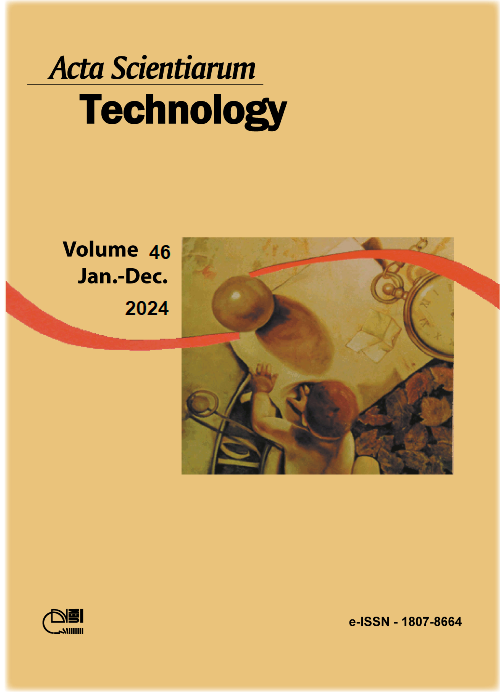Accuracy of goodness-of-fit criteria for nonlinear regression: a study via Monte Carlo simulation
DOI:
https://doi.org/10.4025/actascitechnol.v46i1.63428Keywords:
Growth curves; Coefficient of determination (R^2); Asymptotic Index (AI); Mean Absolute Error (MAE); nonlinearity measures.Abstract
Nonlinear regression models are widespread in the literature, and one of their main applications is in the study of sigmoidal growth curves. There are several models for this purpose, and the most used are the logistic, Gompertz, von Bertalanffy, and Brody models. Each one of them has its own characteristics and is more suitable for a given curve shape. There are several criteria in the literature for selecting the most appropriate model, but there is no consensus on the best criteria. Thus, the present study aims to evaluate the accuracy of the main selection criteria via Monte Carlo simulation, considering the logistic, Gompertz, von Bertalanffy, and Brody nonlinear regression models. Four simulation scenarios are used, each simulated with ideal curves of the logistic, Gompertz, von Bertalanffy and Brody models. Next, the 4 models are adjusted for each of the scenarios, and the main quality criteria found in the literature are calculated to assess the ability of the criteria to identify the most appropriate model for each scenario. The results show that the criteria asymptotic index, mean absolute error and coefficient of determination choose the correct model more often than the other criteria studied. Although the measures of the Battes and Watts curvature and box bias are important for the evaluation of the goodness-of-fit of the models, they are not indicated for the selection of the best model.
Downloads
Downloads
Published
How to Cite
Issue
Section
License
DECLARATION OF ORIGINALITY AND COPYRIGHTS
I Declare that current article is original and has not been submitted for publication, in part or in whole, to any other national or international journal.
The copyrights belong exclusively to the authors. Published content is licensed under Creative Commons Attribution 4.0 (CC BY 4.0) guidelines, which allows sharing (copy and distribution of the material in any medium or format) and adaptation (remix, transform, and build upon the material) for any purpose, even commercially, under the terms of attribution.
Read this link for further information on how to use CC BY 4.0 properly.



















8.png)




